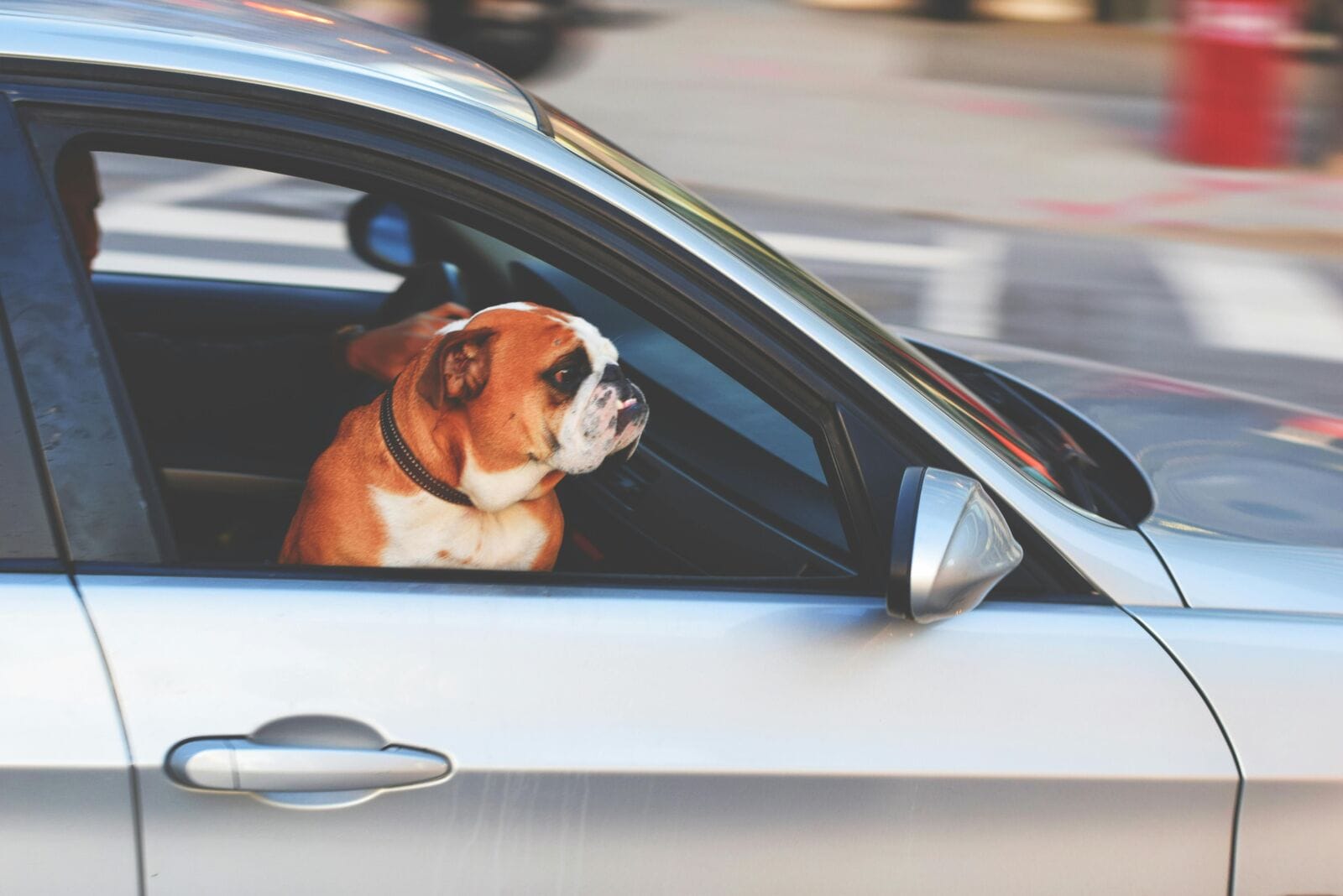Traveling with pets isn’t easy. Our vehicles were designed with us in mind, and it can be hard to keep our canine companions safe on the road. While it’s best to leave your furry friend at home, it’s not always possible—so we’ve put together this list of tips for a successful road trip with your dog.
Schedule a Vet Visit Before the Trip
Every dog-friendly road trip should start with a veterinary check-up. Before the trip, your friends at our Nissan dealership suggest taking your dog to the vet and ensuring they’re up to date on their vaccinations.
In some cases, vets recommend supplements and medications that help with travel anxiety and motion sickness. Inform your vet of your plans; if your dog is healthy enough to travel, you’ll get the go-ahead.
Keep Your Dog Safe and Secure
Where dogs and automotive safety are concerned, there are a few options. Your choice may depend on several factors, including the car’s interior space, your pet’s size, and their temperament.
As much as we’d all love to let our dogs sit in someone’s lap or hang their heads out the window for fresh air, it’s not the best idea. Not only can it create more stress for your dog, but it also puts them in danger. Keep your dog safe with:
· A dog-friendly seat belt or car seat.
· A rear-seat hammock.
· A travel carrier or crate.
Additionally, remember to lock the doors and keep windows up while in motion—after all, our dogs are very determined when they want to be!
Keep Your Pet’s ID Handy
It’s a good idea to keep dogs’ ID tags on, but it’s doubly important when traveling. Before setting out, verify that the contact information on your dog’s tags is updated and legible. Consider getting your pet microchipped, so they can be found and returned if they escape, and keep a recent photo on hand. (If you’re like most dog owners, that shouldn’t be a problem!)
Form Positive Associations
If your pooch only takes car rides when going to the vet, it makes sense that they’ll have negative associations with the practice. Thankfully, the fix is an easy one—if you have patience and time.
In the months, weeks, and days before your road trip, take your dog for some practice rides to their favorite spots, such as the dog park or their favorite pet store. Your dog will learn that it’s not a bad thing to get into the car, and you’ll spend some quality time with them. Whether you use a seat belt, a car seat, or a carrier, secure your pet in the same way they’ll be on the trip.
Pack Your Dog’s Favorites and Some Essentials
To avoid frantic searches through bags and suitcases, pack a bag for your dog so all their necessities are nearby. Your dog’s ‘bug-out bag’ should contain:
· Collapsible water and food bowls.
· Their favorite food.
· A harness and a leash.
· Their favorite toys.
· Waste disposal bags.
· Prescription medicines and supplements.
· Vaccination and health records.
By packing a suitcase for your dog, you’ll keep them healthy, happy, and content throughout the trip. Your veterinarian may have other beneficial dog-friendly travel tips.
Prevent Motion Sickness: It Helps You and Your Dog
Traveling with pets is stressful, and sudden bouts of nausea can make it even worse. As a rule, dogs should ride on an empty stomach, even if their favorite foods bring comfort. Depending on the length of the trip, it may mean skipping an evening feeding the night before or breakfast the morning of departure.
When feeding your dog on the road, give them familiar treats and food, as trying new things may lead to stomach issues. Don’t feed while moving; instead, give your dog small portions of food and water at every rest stop. Keep the car properly ventilated and be sure your furry friend is getting enough air if they’re in a crate.
Let Your Dog Get the Zoomies Out Before Hitting the Road
As most pet parents know, a tired pup is a well-behaved one. A dog’s excess energy may lead to anxiety and stress, so it’s wise to help them get their zoomies out before getting into the car for long stretches. If possible, go for a walk before departing (and encourage your dog to go to the bathroom). If your vet allows it, consider giving your pooch a calming supplement before setting out.
When on the road, be sure your pup has toys to keep them busy and try to make frequent rest stops. At those stops, leash your dog and let them get some playtime, exercise, and stretching. You’ll get some exercise, too—and you’ll reassure your dog that you’re there for the duration. By allowing your dog to run off some of their excess energy, they’ll spend a good chunk of their time on the road snoozing peacefully.
Bonus Tip: Keep Your Dog Safe When the Car Is Stopped
Because you’ll be stopping every two to three hours while on the road, it’s crucial to have procedures in place for rest and fuel stops. Busy stops are incredibly stressful for dogs, especially those used to peace and quiet at home. If possible, park near a grassy patch, away from people and cars. Unless your dog is on their leash and under your control, do not let them out of the car.
Furthermore, don’t leave your pet unattended in the car, even for a few minutes. If you need a rest stop or a food break, choose a canine-friendly spot or have a roadside picnic so you and your dog can stay together.
Safe and Uneventful Travel With Dogs: Yes, It’s Possible!
While traveling with animals isn’t always easy, it is possible—and it can even be rewarding. By planning the trip carefully, prioritizing your dog’s comfort and safety, and following the other tips on our list, you can create lifelong memories for yourself and your four-legged friend.




